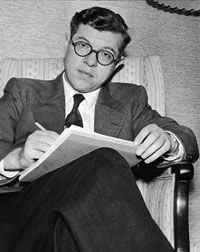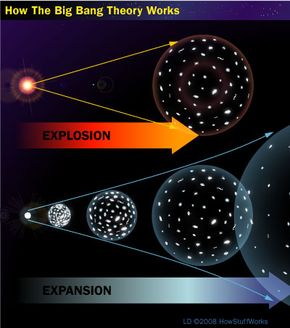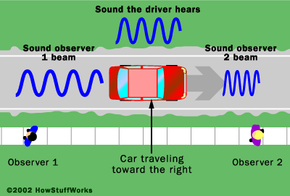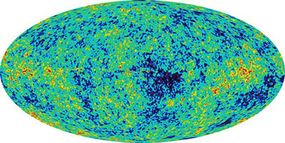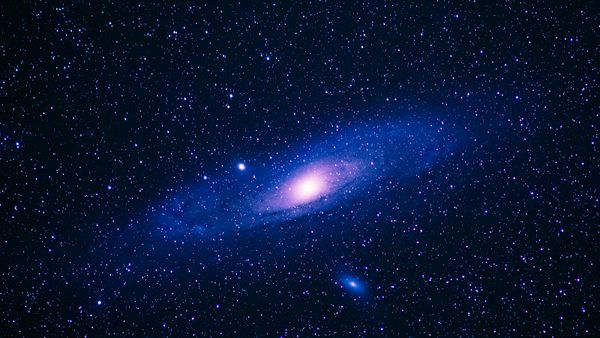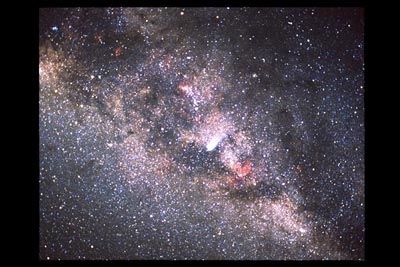A lot happened in that first second of the big bang. But that's just the beginning of the story. After 100 seconds, the universe's temperature cooled to 1 billion degrees Kelvin (1 billion degrees Celsius, 1.8 billion degrees Fahrenheit). Subatomic particles continued to combine. By mass, the distribution of elements was approximately 75 percent hydrogen nuclei and 24 percent helium nuclei (the other percent consisted of other light elements like lithium).
The temperature of the universe was still too high for electrons to bond with nuclei. Instead, electrons collided with other subatomic particles called positrons, creating more photons. But the universe was too dense to allow light to shine inside of it.
The universe continued to expand and cool. After about 56,000 years, the universe had cooled to 9,000 degrees Kelvin (8,726 degrees Celsius, 15,740 degrees Fahrenheit). At this time, the density of the matter distribution in the universe matched the density of radiation. After another 324,000 years, the universe had expanded enough to cool down to 3,000 degrees Kelvin (2,727 degrees Celsius, 4,940 degrees Fahrenheit). Finally, protons and electrons could combine to form neutral hydrogen atoms.
It was at this time, 380,000 years after the initial event, when the universe became transparent. Light could shine throughout the universe. The radiation that humans would later identify as cosmic microwave background radiation locked into place. When we study the CMB today, we can extrapolate a picture of what the universe looked like then.
For the next 100 million years or so, the universe continued to expand and cool. Small gravitational fluctuations caused particles of matter to cluster together. Gravity caused gases in the universe to collapse into tight pockets. As gases contract, they become more dense and hot. Some 100 to 200 million years after the initial creation of the universe, stars formed from these pockets of gas.
Stars began to cluster together to form galaxies. Eventually, some stars went supernova. As the stars exploded, they ejected matter across the universe. This matter included all the heavier elements we find in nature (everything up to uranium). Galaxies in turn formed their own clusters. Our own solar system formed around 4.6 billion years ago.
Today, the temperature of the universe is 2.725 degrees Kelvin (-270 degrees Celsius, -455 degrees Fahrenheit), which is only a couple of degrees above absolute zero. The homogenous section of the universe we can theorize about reaches 1 x 1029 centimeters across (6.21 x 1023 miles). That's larger than what we're able to physically observe using our most advanced astronomical instruments.
What does the big bang theory tell us about the universe? We'll find out next.
The Big Bang Theory FAQ
Who discovered the big bang theory?
How did the big bang happen from nothing?
According to the theory, the universe was extremely dense and hot. There was so much energy in the universe during those first few moments that matter as we know it couldn't form. But the universe expanded rapidly, which means it became less dense and cooled down. As it expanded, matter began to form and radiation began to lose energy. In only a few seconds, the universe formed out of a singularity that stretched across space.
What is the big bang theory in simple terms?
The big bang is an attempt to explain how the universe developed from a very tiny, dense state into what it is today. It doesn't attempt to explain what initiated the creation of the universe, or what came before the big bang or even what lies outside the universe.
What does the big bang theory tell us?
According to the big bang theory, there's no center of the universe. Every point in the universe is the same as every other point, with no centralized location.
How did the big bang start?
At the earliest moments of the big bang, all of the matter, energy and space we could observe was compressed to an area of zero volume and infinite density. Cosmologists call this a singularity.
